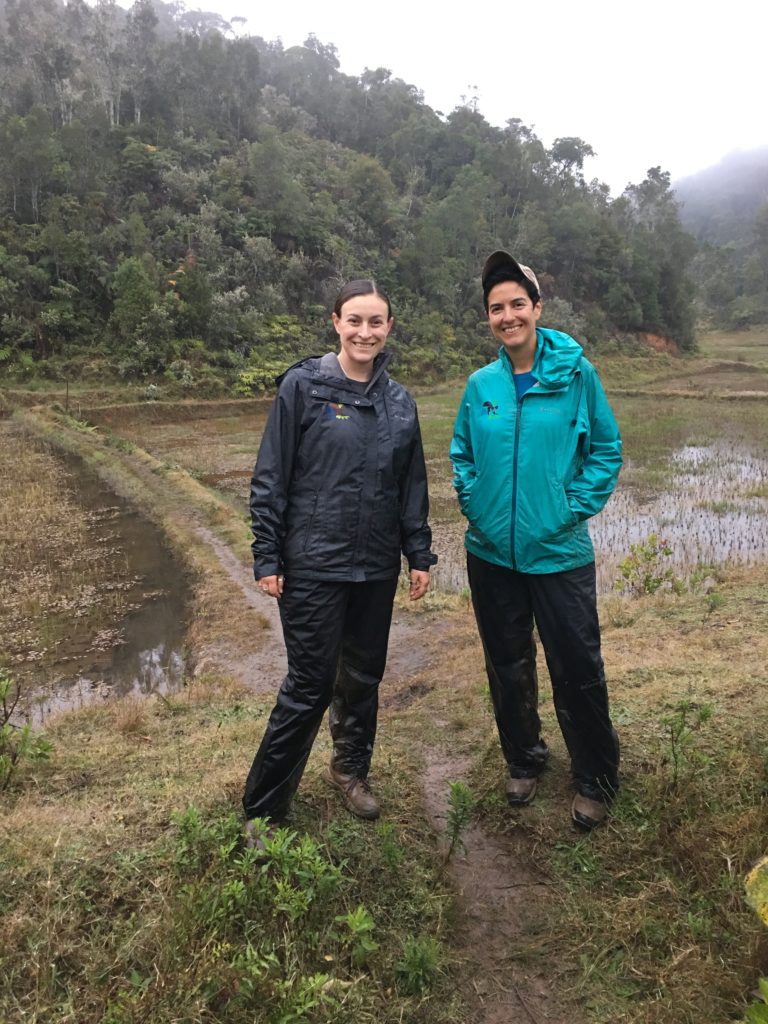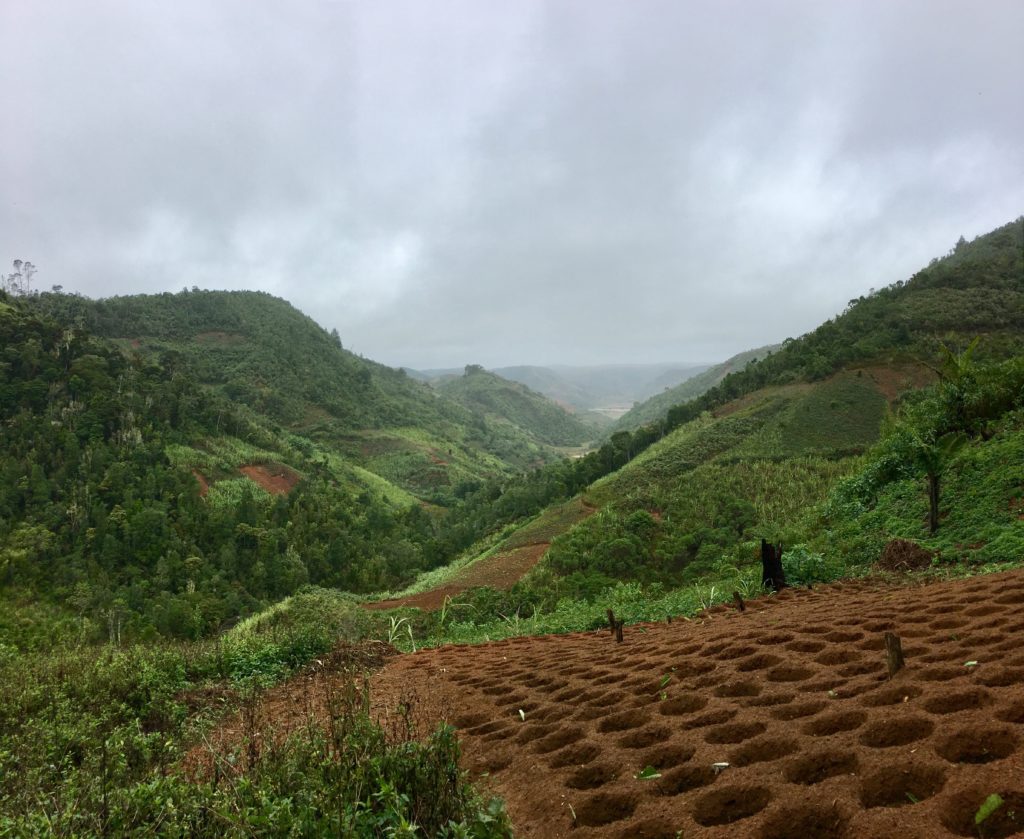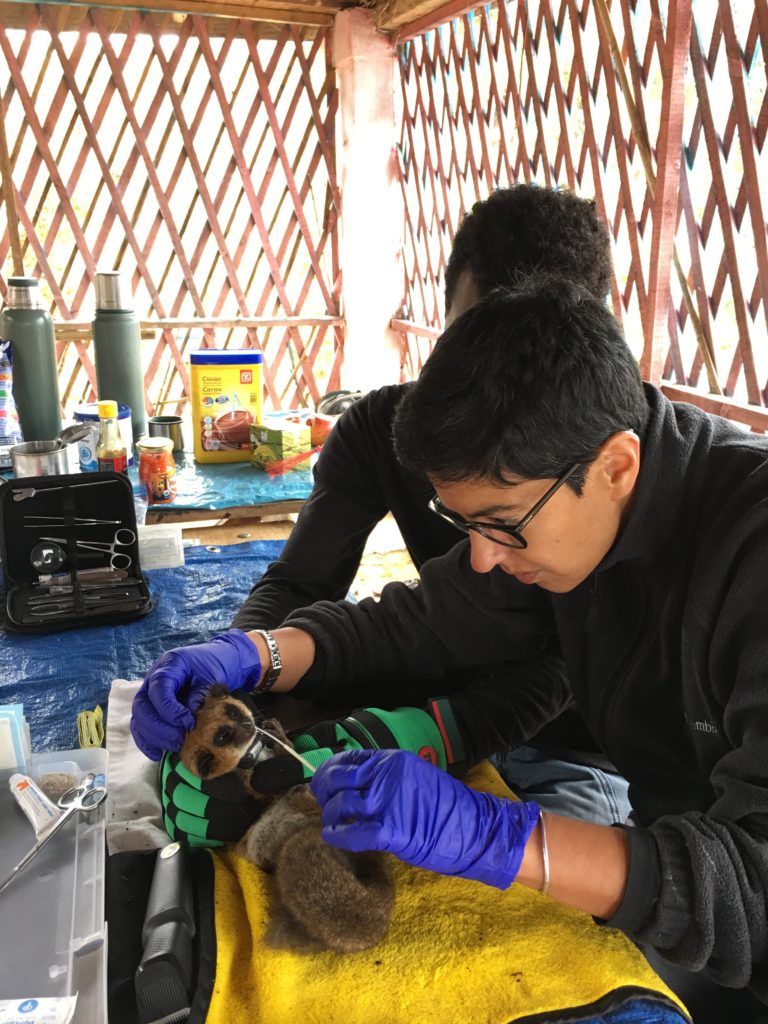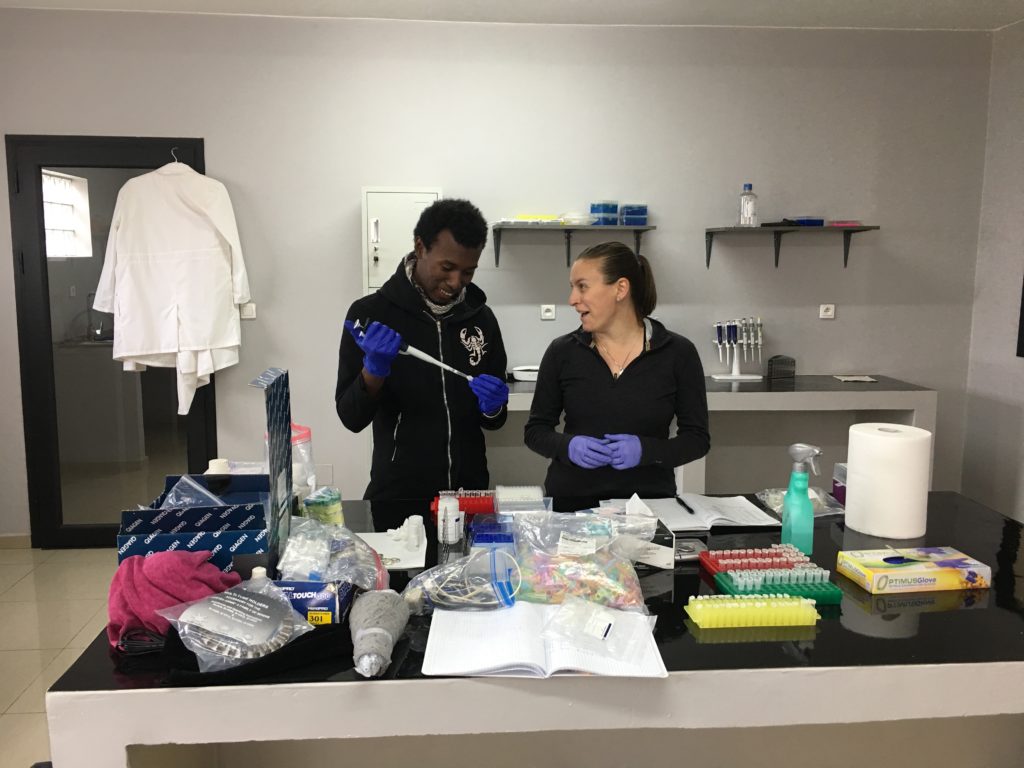
By DLC research scientists Marina Blanco, Ph.D. and Lydia Greene, Ph.D.
While the DLC lemurs are coping with the heat of a Durham summer, many of their kin in Madagascar are currently using feats of physiology to survive frigid winters.
The rainforests of Madagascar’s high plateau can sit at 1700m (~5600 feet) above sea level. Temperatures in June-August can plummet to near freezing and, although this is ‘technically’ the dry season, rain jackets are a must, slippery slopes are a constant, and long underwear is a plus.
We, DLC researchers Marina and Lydia, are just back from a field mission in these forests, as part of our ongoing project on hibernation in dwarf lemurs. Although we have known for decades that dwarf lemurs hibernate, and for a few years that some of them do so underground, we still have lots of questions about what their bodies “do” to prepare, sustain, and survive the hibernation season.
Equipped with radio collars (outfitted during a previous mission in February), our team, including expert guides Rene and Jules and student assistant Basile, tracked the dwarf lemurs to their burrows and “uncovered” them for one day to collect precious samples for analysis.
Back in the capital city of Antananarivo, Basile helped us process the samples at the Mahaliana lab. Ultimately, these samples will be subject to a suite of analyses that will better our understanding of metabolic changes, stress control, physiological resilience, and microbiome structure and regulation in dwarf lemurs. We hope our studies in Madagascar and at the DLC, using minimally invasive techniques, will help crack the code of primate hibernation.
Now, time for a hot shower and some serious laundry!

Lydia (left) and Marina (right). It’s cold and wet in the winter at Tsinjoarivo!

Tsinjoarivo landscape.
Jules and Rene tracking hibernating lemurs.

Collecting samples.

With Basile in the Mahaliana lab in Tana.

